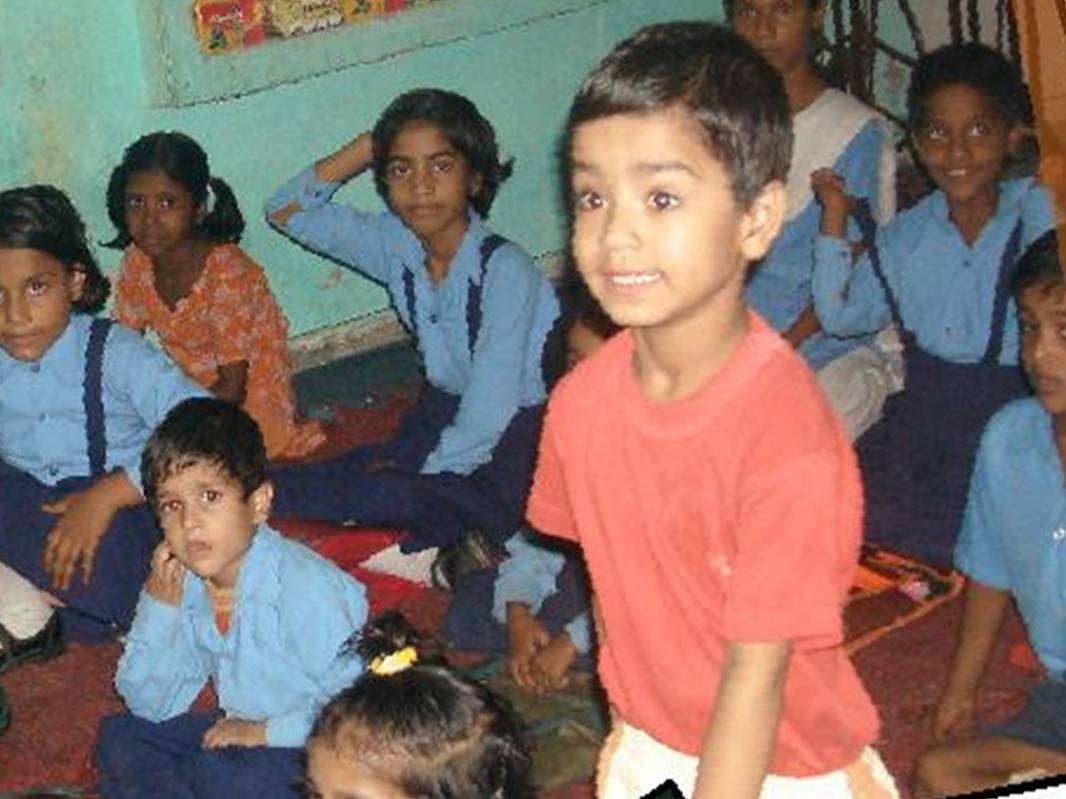 Sakshi ECCD's care for young children below 6 yrs (whose day labor parents must work every day), attending to their health, nutrition, education, social development and preparing them for primary school in a friendly encouraging environment where going to school is a desirable and normal activity. Sakshi ECCD's care for young children below 6 yrs (whose day labor parents must work every day), attending to their health, nutrition, education, social development and preparing them for primary school in a friendly encouraging environment where going to school is a desirable and normal activity.
Importantly also, now their older siblings do not have to drop out of their own school to look after them.
Learn More: ?BEFORE: Malnourishment, Illiteracy and Illness ?AFTER Sakshi ECCD Intervention: Health, Education and Care  Case Study: Shabnam Ma'am Finds The Secret To Happiness Case Study: Shabnam Ma'am Finds The Secret To Happiness
 ?BEFORE: Malnourishment, Illiteracy and Illness ?BEFORE: Malnourishment, Illiteracy and Illness
In urban slums, both parents are often out working as day labor to make ends meet. Pre-school children receive neither adequate social and educational developmental support nor nutrition or health care. They are likely to grow up sickly and undeveloped. They will also not be used to the idea of education and will have problems in school.
Many a time too, elder siblings drop out of school to care for them, a major reason for the high drop-out rate in slum schools.
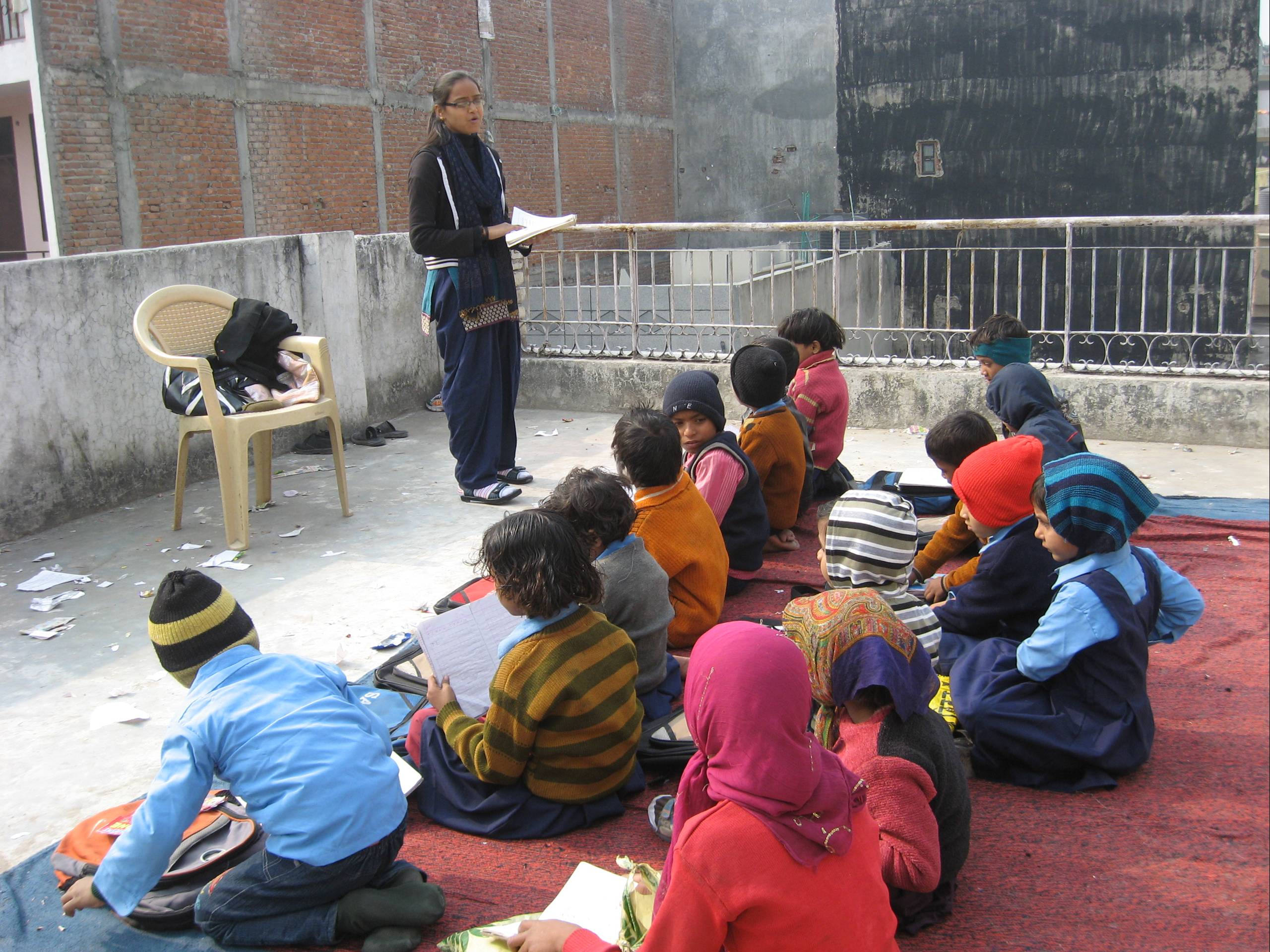
?AFTER Sakshi ECCD Intervention: Health, Education and Care
This is where Sakshi steps in. Our ECCD's take care of these little ones, nourishing not only their growing bodies and minds but also providing the kind of maternal love and support the young ones need at that age.
Without ECCD's, our NFE program would also not have much success in getting their older brothers and sisters back to school.
EECD Program Services:
Health, Nutrition and Medical Care
Sakshi provides for:
-
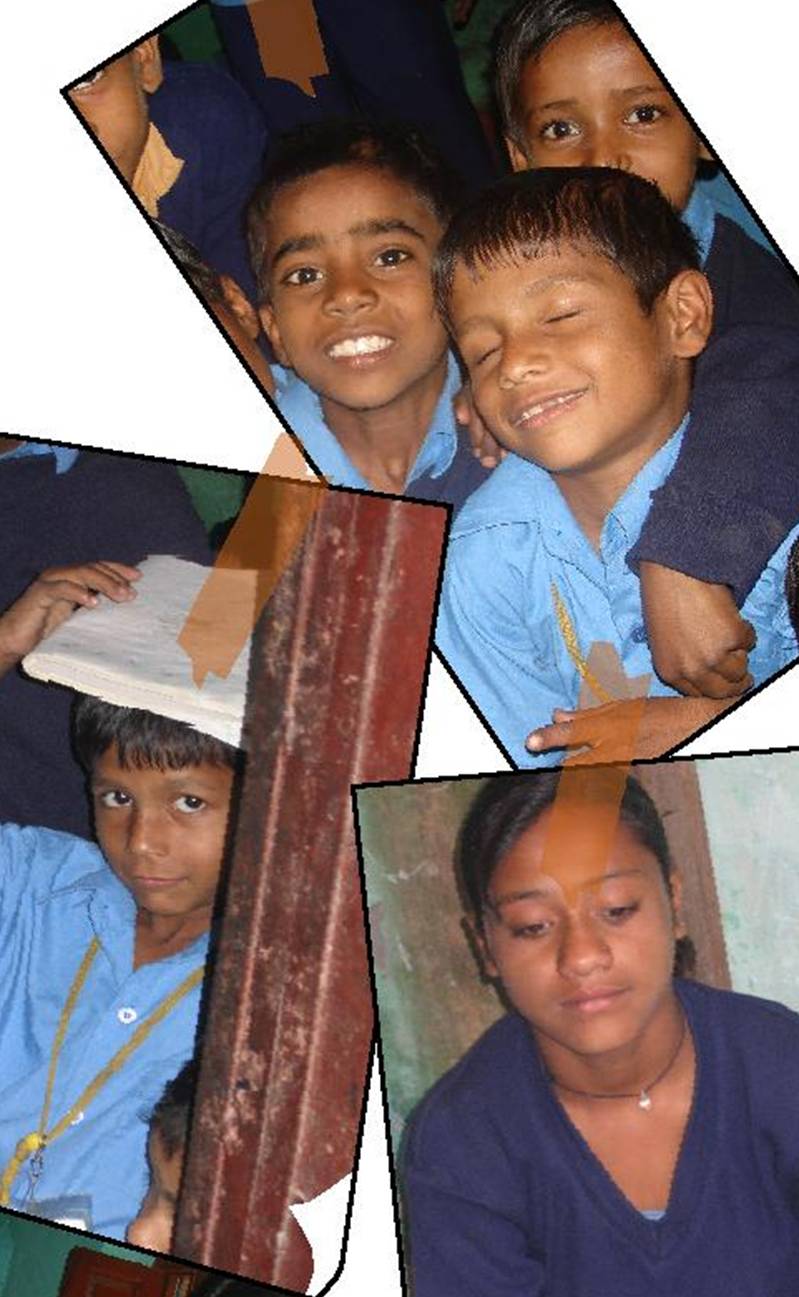 Monthly health check-up along with provisions of medicines. Monthly health check-up along with provisions of medicines.
-
Provision of daily nutritious lunches.
-
If a child misses class, the teacher/social worker goes to her home and if she is ill, arranges the necessary medical care.
Preparing for Primary School
The goals of the Early Childhood Care and Development Centres are to develop the child’s social skills and personality, equip her with necessary subject skills and instill the habit of going to school, learning, reading which she will not pick up from home. Because the children are so young, 1-6 yrs, teachers stand almost in place of mothers.
-
Sakshi provides all necessary books, supplies, backpacks, and uniforms for the children.
-
The children play, learn the alphabet and numbers and basic reading and arithmetic skills in both Hindi and English. They learn poems, paint, draw, do crafts & theatre.
-
Sakshi teachers follow Sakshi's "Joyful Learning" model where song, dance, role play are the primary methods of teaching along with a friendly, encouraging environment.
-
Each child takes regular tests to ensure progress and pupils who need extra help are provided it.
Building Parental Support
Sakshi faces the challenge of convincing parents who are illiterate and unaware of the value of education to send their children to school. It is very difficult. Many times multiple home visits are required. Through experience, Sakshi has learnt how to achieve success.
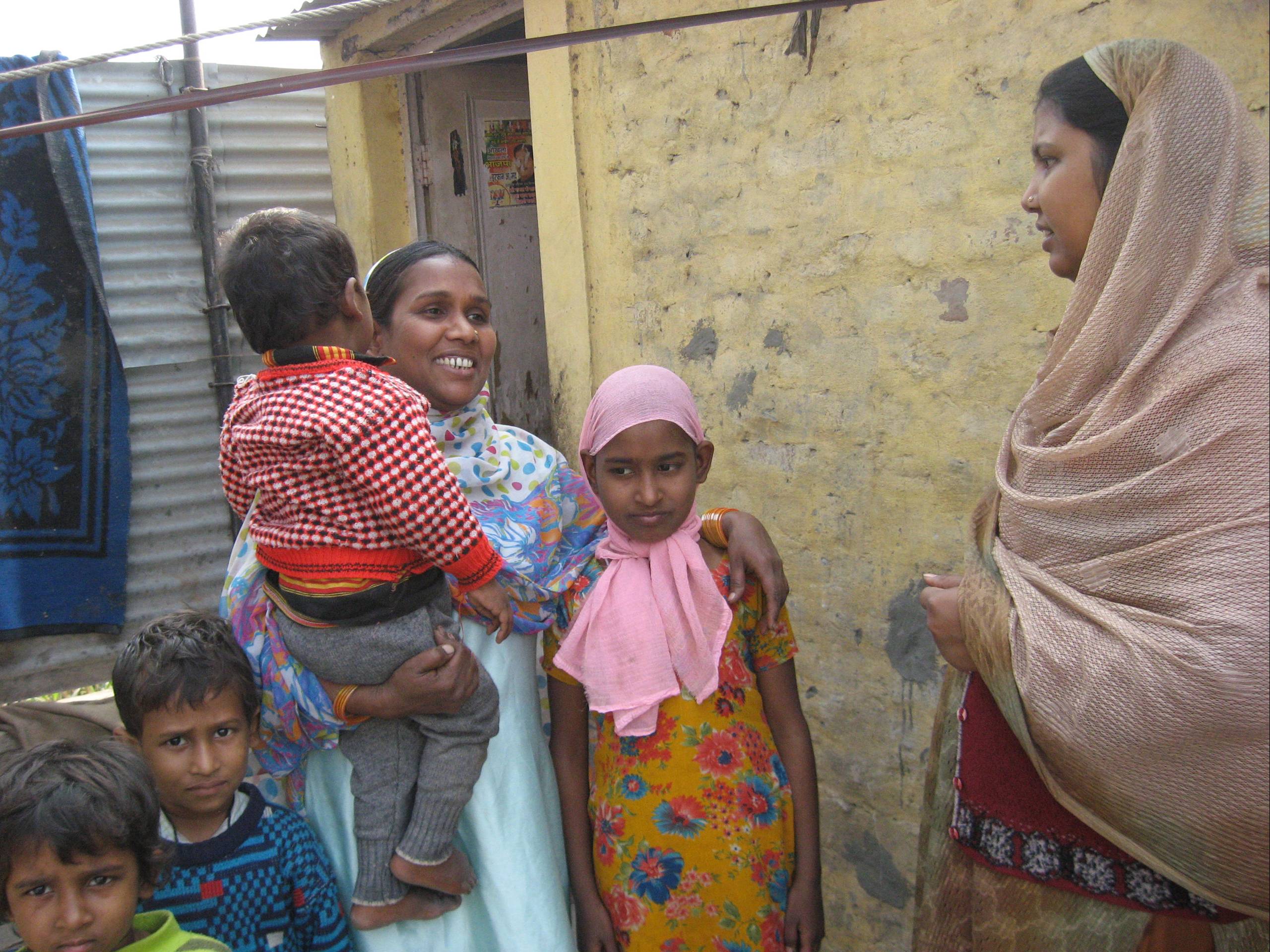 Teachers/social workers are recruited from the beneficiary population so parents have greater trust in the messenger and message. Teachers/social workers are recruited from the beneficiary population so parents have greater trust in the messenger and message.
Also, through them the parents can see the advantages of education in the form of better socio-economic circumstances first hand.
Finally, since parents don't have time or money for transportation, schools are opened within the beneficiary area.
L: Sakshi Staff Makes a Home Visit
|
Case Study: Early Childhood Care and Development Centre, Shaheen Bagh
"Shabnam Ma'am finds the Secret to Happiness"
Shaheen Bagh, a slum in Delhi had no facility to take care of young children between 3-6 yrs. Residents work as day labor to make ends meet. So the little ones were left alone or their elder siblings were forced to drop out to look after them.
Then, Sakshi opened two Early Childhood Care and Development Centres. The young 'uns now learn to read and write in a loving and encouraging environment, draw, sing, dance and receive good food and medical care.
Sakshi teacher Shabnam ma'am works long hours convincing slum-dwellers who are illiterate to school their kids but she loves her job. Glowing, she points out every child in her ECCD graduated to join a primary school!
Read Shabnam ma'am's story, the difficulties she faces and the happiness she has.
Sometimes the reasons for dropping out of school are so simple. "The school is very far from here," Shabnam explains. Indeed, there is neither an MCD school in Shaheen Bagh nor school bus service. The nearest bus service is not easily accessible by children between 3 and 6. But above all, not easily accessible for children whose parents do not grasp the importance of education, can neither read or write and are on low incomes (farm workers, factory workers etc).
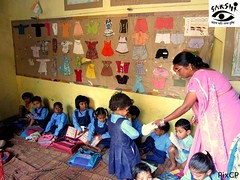 Shabnam has worked as a teacher with Sakshi or more than 4 years. She really knows these communities and understands their needs. The children need a lot of assistance. Faced with this situation, Sakshi opened 2 ECCD's in Shaheen Bagh. Shabnam has worked as a teacher with Sakshi or more than 4 years. She really knows these communities and understands their needs. The children need a lot of assistance. Faced with this situation, Sakshi opened 2 ECCD's in Shaheen Bagh.
30 children benefit from Shabnam's centre. Because resources need to be stretched, children between ages 3-6 are in the same classroom. Classwork goes on in different groups for different levels. Pupils take tests regularly to assess progress.
When Shabnam talks about challenges, she stresses the difficulty of convincing the parents to send their children to the ECCD. It is a recurrent task. Every month teachers and Sakshi staff meet the parents.
However, despite all the difficulties, Shabnam is very happy. She loves her work and she underlines the success of her centre; every child joined a Primary School at the end of the year.
|
Related Links
Learn about the three pillars of the Sakshi Education Model
|